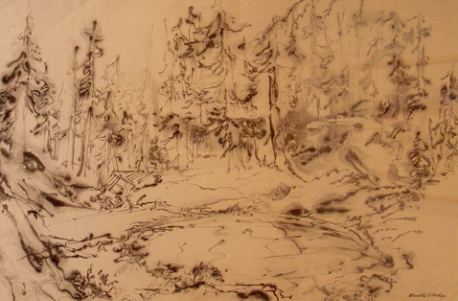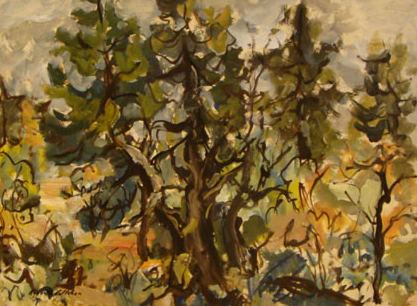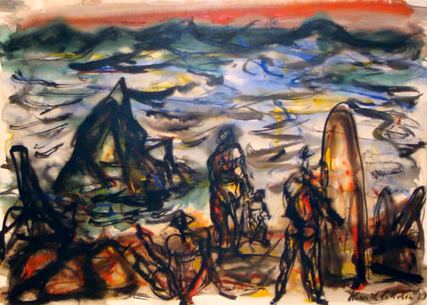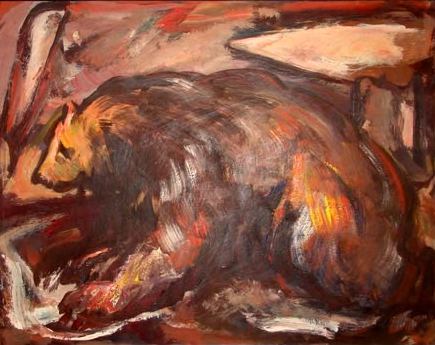Unlike the other major members of the Northwest School, Kenneth Callahan did not seek transcendence. What was on earth was good enough for him.
He started out strong as a figurative painter in the 1930s. Forging a
silky yet monumental style, he created men to match Northwest
mountains. He liked muscle-bound grandeur but released the figures who displayed it from the confines of gravity. Full of light, many hover on the edge of floating away.
By the 1940s, he had pinned his figures to the ground with webbing.
There are excellent paintings from this period, but by the late 1960s, he was more interested in abstractions. By the 1970s, his work had taken a brazenly ugly turn, with hot strokes of
orange against blood brown and crinkled masses of shadows.
Bad taste is a fatal flaw in a decorator, but in an artist it’s
neutral. Artists who fully inhabit their bad taste take it to
another realm, where taste is irrelevant. Callahan inhabited his whenever he chose. There were moments in his career when his work was highly prized and edging its way into national prominence, and moments when even in the Northwest he was overlooked. The Northwest School’s Big Four (Morris Graves, Guy Anderson, Mark Tobey and Callahan), evolved into the Big Three, with Callahan missing. If he cared, he did not let on.
A small survey of his career is currently at the Woodside/Braseth Gallery, from the 1940s through the 1980s. (He died in 1986 in his early 80s.) All the best work is missing, but what’s here is swell. The exhibit is light on the abstractions that lost him so many fair-weather friends and concentrates on what everyone admires: his sumi inks, oil portraits of animals and small, florid landscapes.
North Lake Camp, early 1950s, sumi ink. 35 x 46 inches. Imagine that the image the gallery supplied is on white paper in black ink. The sepia tone appears to have arisen from the process of transmittal. At any rate, the fallen cabin on the left belonged to Guy Anderson. Callahan sketched it soon after its demise, when the snow that brought it down had started to clear. The trees moving in and out of focus have a skittery grace. They lean into the light as if they’re starved for it.

Forest I, oil/paper, 1960, 28 x 33 inches. Charles Burchfield without the otherworldly anguish. The light gathers low in the rear to push the verticals into the foreground.
 Family at Long Beach II,
Family at Long Beach II,
1951, oil & sumi on paper, 33
x 42 inches. Surf’s up. This is surely the only painting from anyone
associated with the Northwest School that features surf boards.
 Bear, Granite Falls,
Bear, Granite Falls,
oil on paper, c.1950’s, 25.5 x
30.5 inches. The bear appears to be painting. Is it creating its own
surroundings? They suggest the abstractions Callahan favored in the
decades that followed. Pretty good, for a bear.

Nowhere on the gallery’s Web site is the closing date specified. I’m
guessing the middle of February. Refusing to divulge a closing date is
a bit of a tic for this gallery. Maybe it hates to say goodbye.



Leave a Reply